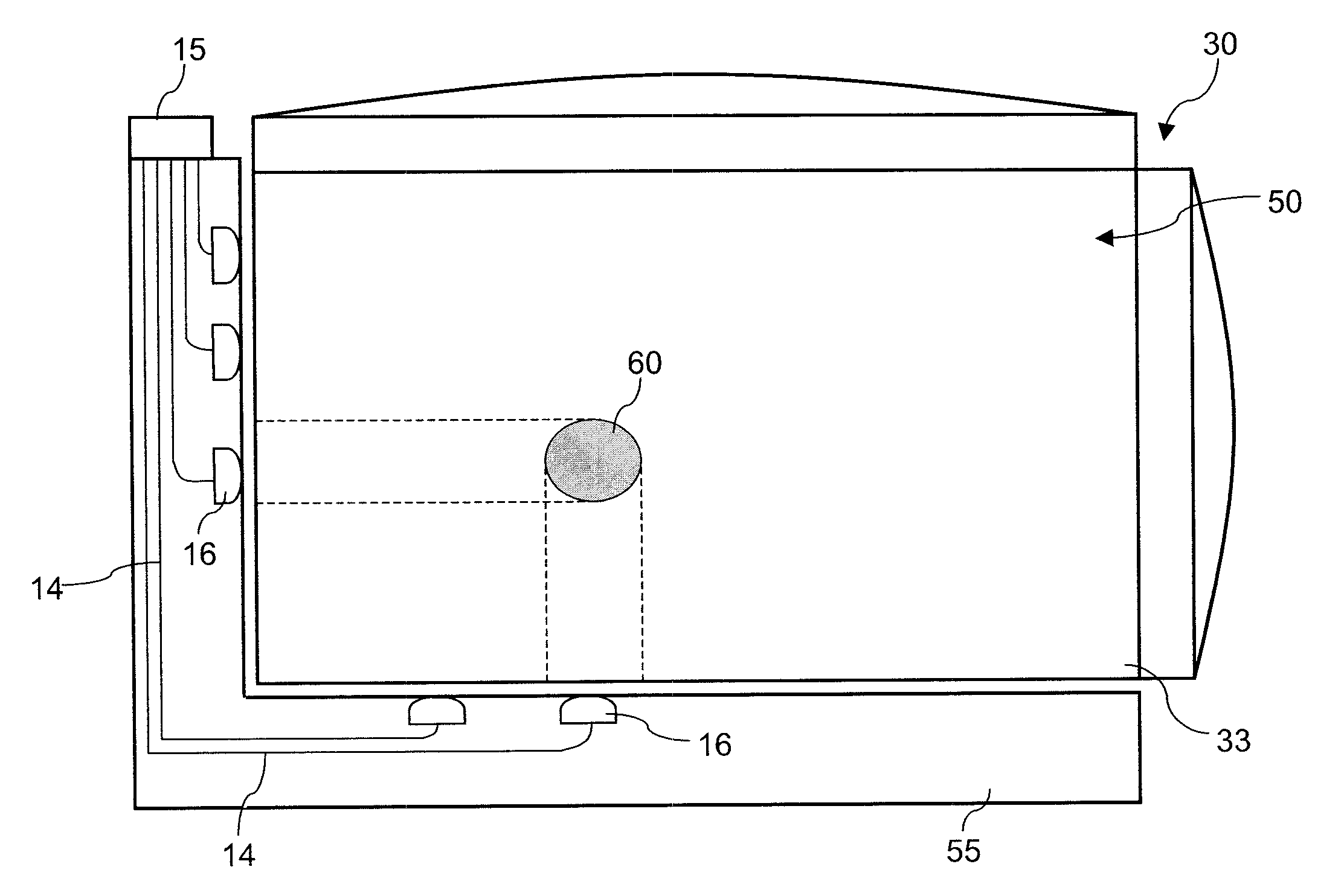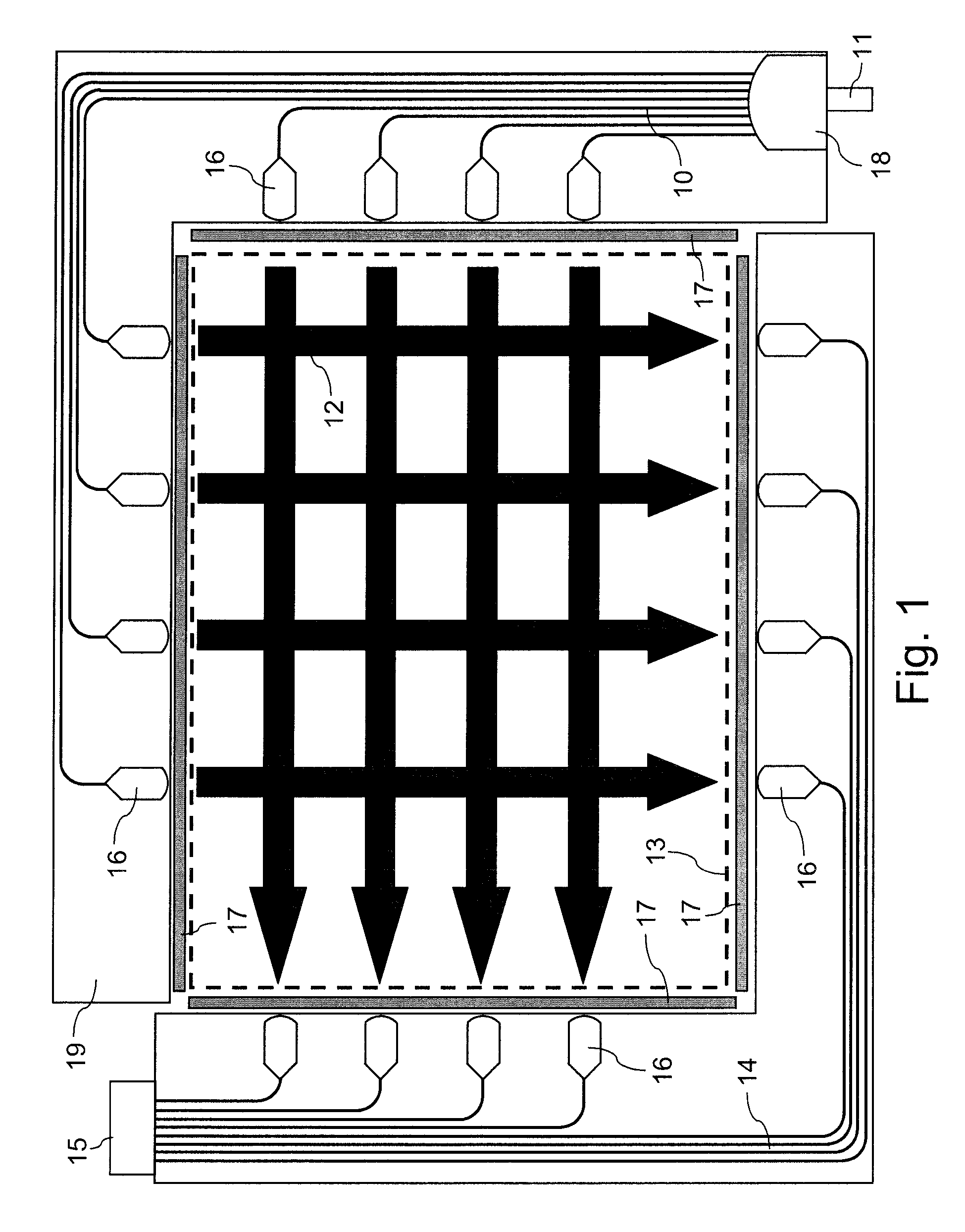Transmissive Body
a technology of resistive devices and body parts, applied in the field of input devices, can solve the problems of resistive devices being sensitive to humidity, requiring excessive power usage, and dimmering the underlying screen, so as to reduce interaction and reduce light leakag
- Summary
- Abstract
- Description
- Claims
- Application Information
AI Technical Summary
Benefits of technology
Problems solved by technology
Method used
Image
Examples
Embodiment Construction
[0136]References will now be made to the drawings wherein like reference numerals refer to like parts throughout. As mentioned previously, waveguide-based optical touch screen sensors of the type shown in FIG. 1 tend to suffer from a signal to noise problem, where their performance is impaired in bright ambient light conditions. There is also a need to reduce costs, especially in the arrays of transmit waveguides 10 and receive waveguides 14, and to avoid the requirement to align the transmit and receive waveguides carefully during assembly.
[0137]FIGS. 3, 4 and 5 show plan, side and perspective views respectively of a substantially planar transmissive body 30 for an input device according to a first embodiment of the disclosure. The transmissive body 30 comprises a transmissive element 33 adapted to receive, confine and transmit in planar form an optical signal 35 from an optical source 38. The transmissive body 30 further comprises a collimation element 40 adapted to substantially ...
PUM
 Login to View More
Login to View More Abstract
Description
Claims
Application Information
 Login to View More
Login to View More - R&D
- Intellectual Property
- Life Sciences
- Materials
- Tech Scout
- Unparalleled Data Quality
- Higher Quality Content
- 60% Fewer Hallucinations
Browse by: Latest US Patents, China's latest patents, Technical Efficacy Thesaurus, Application Domain, Technology Topic, Popular Technical Reports.
© 2025 PatSnap. All rights reserved.Legal|Privacy policy|Modern Slavery Act Transparency Statement|Sitemap|About US| Contact US: help@patsnap.com



